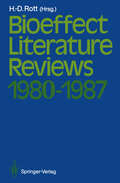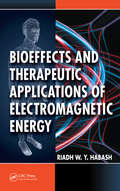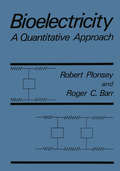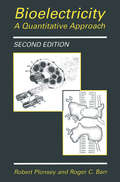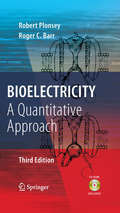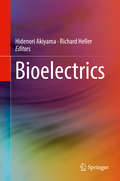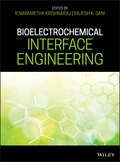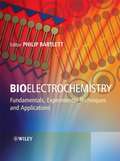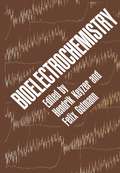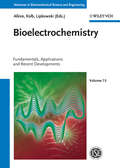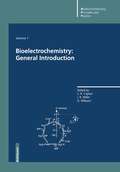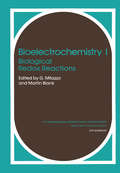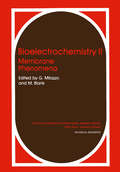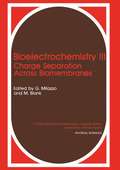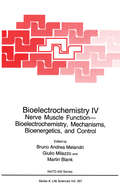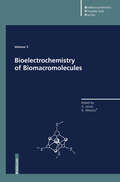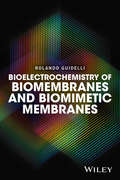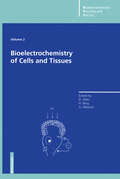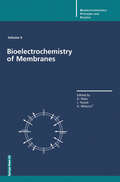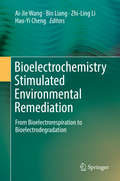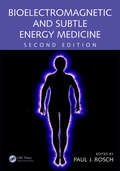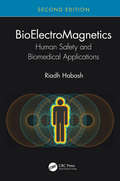- Table View
- List View
Bioeffect: Literature Reviews 1980–1987
by Hans-DieterRottDiagnostic ultrasound has been in clinical use for more than 25 years, during which time it has been introduced into nearly all clinical disciplines. No substantial arguments for any adverse ef fects have been found. It is therefore commonly accepted that sono graphy is safe and causes no health risks. However, safety is not a property that can be proved experimentally; rather, it is character ized by the absence of detectable adverse effects in various relevant investigations. It is reasonable always to reconsider this assumption of safety by evaluating the latest results of ultrasound bioeffect re search. Thus the European Federation of Societies for Ultrasound in Medicine and Biology (EFSUMB) decided to establish a bio effect group with the task of - assessing existing documentation on the subject - carrying out a continuing review of the literature, particularly in relation to any new evidence that might modify existing conclu sions and recommendations - making reports to the membership on the state of the subject at such times and in such ways as seems appropriate The Watchdog Group was instituted in 1979 and named the Euro pean Committee for Ultrasonic Radiation Safety. It comprises ex perts in the field on an interdisciplinary basis, including physicists, biologists, gynecologists, and a geneticist. Since its formation the Watchdog Group has met once a year to discuss relevant topics. Its activities include the composition of reports, statements, and publi cations, as well as the organization of panel discussions.
Bioeffects and Therapeutic Applications of Electromagnetic Energy
by Riadh HabashFrom cell phones to treating cancer, EM energy plays a part in many of the innovations that we take for granted everyday. A basic force of nature, like nuclear energy or gravity, this energy can be harnessed and used, but still holds the potential to be harmful. The question remains, how safe are EM products? Bioeffects and Therapeutic Applicati
Bioelectricity: A Quantitative Approach
by Roger C. Barr Robert PlonseyThis text is an introduction to electrophysiology, following a quantitative approach. The first chapter summarizes much of the mathematics required in the following chapters. The second chapter presents a very concise overview of the general principles of electrical fields and current flow, mostly es tablished in physical science and engineering, but also applicable to biolog ical environments. The following five chapters are the core material of this text. They include descriptions of how voltages come to exist across membranes and how these are described using the Nernst and Goldman equations (Chapter 3), an examination of the time course of changes in membrane voltages that produce action potentials (Chapter 4), propagation of action potentials down fibers (Chapter 5), the response of fibers to artificial stimuli such as those used in pacemakers (Chapter 6), and the voltages and currents produced by these active processes in the surrounding extracellular space (Chapter 7). The subsequent chapters present more detailed material about the application of these principles to the study of cardiac and neural electrophysiology, and include a chapter on recent developments in mem brane biophysics. The study of electrophysiology has progressed rapidly because of the precise, delicate, and ingenious experimental studies of many investigators. The field has also made great strides by unifying the numerous experimental observations through the development of increasingly accurate theoretical concepts and mathematical descriptions. The application of these funda mental principles has in turn formed a basis for the solution of many different electrophysiological problems.
Bioelectricity: A Quantitative Approach
by Robert Plonsey Roger C. BarrIn the first edition of Bioelectricity, Plonsey and Barr provided an introduction to electrophysiology following a quantitative approach. In this second edition they address new discoveries in the field of ion channels. The text is an introduction to electrophysiology utilizing a quantitative approach. It describes the principles of electrical fields, using basic principles from science and engineering while taking the biological applications into consideration. The book thus provides an introduction to the quantitative description of underlying electrophysiology with illustrative application to cardiac electrophysiology and functional electrical stimulation. The book can be used as a bridge to more advanced texts, particularly those that stress a quantitative approach.
Bioelectricity: A Quantitative Approach
by Robert Plonsey Roger C. BarrThis is the new edition of the classic introductory text to electrophysiology. It covers many topics that are central to the field including the electrical properties of the cell membrane and cardiac electrophysiology. Organized as a textbook for the student needing to acquire the core competencies, this book meets the demands of advanced undergraduate or graduate coursework in biomedical engineering and biophysics. New features include extra, detailed illustrations. The book is authored by two eminent biomedical engineering professors at Duke University who discuss many topics that are central to biophysics and bioengineering and the quantitative methods employed.
Bioelectrics
by Hidenori Akiyama Richard HellerThis book focuses on bioelectrics, a new multidisciplinary field encompassing engineering and biology with applications to the medical, environmental, food, energy, and biotechnological fields. At present, 15 universities and institutes in Japan, the USA and the EU comprise the International Consortium of Bioelectrics, intended to advance this novel and important research field. This book will serve as an introductory resource for young scientists and also as a textbook for use by both undergraduate and graduate students – the world’s first such work solely devoted to bioelectrics.
Bioelectrochemical Interface Engineering
by R. Navanietha Krishnaraj Rajesh K. SaniAn introduction to the fundamental concepts and rules in bioelectrochemistry and explores latest advancements in the field Bioelectrochemical Interface Engineering offers a guide to this burgeoning interdisciplinary field. The authors—noted experts on the topic—present a detailed explanation of the field’s basic concepts, provide a fundamental understanding of the principle of electrocatalysis, electrochemical activity of the electroactive microorganisms, and mechanisms of electron transfer at electrode-electrolyte interfaces. They also explore the design and development of bioelectrochemical systems. The authors review recent advances in the field including: the development of new bioelectrochemical configurations, new electrode materials, electrode functionalization strategies, and extremophilic electroactive microorganisms. These current developments hold the promise of powering the systems in remote locations such as deep sea and extra-terrestrial space as well as powering implantable energy devices and controlled drug delivery. This important book: • Explores the fundamental concepts and rules in bioelectrochemistry and details the latest advancements • Presents principles of electrocatalysis, electroactive microorganisms, types and mechanisms of electron transfer at electrode-electrolyte interfaces, electron transfer kinetics in bioelectrocatalysis, and more • Covers microbial electrochemical systems and discusses bioelectrosynthesis and biosensors, and bioelectrochemical wastewater treatment • Reviews microbial biosensor, microfluidic and lab-on-chip devices, flexible electronics, and paper and stretchable electrodes Written for researchers, technicians, and students in chemistry, biology, energy and environmental science, Bioelectrochemical Interface Engineering provides a strong foundation to this advanced field by presenting the core concepts, basic principles, and newest advances.
Bioelectrochemical Interface Engineering
by Rajesh K. Sani R. Navanietha KrishnarajAn introduction to the fundamental concepts and rules in bioelectrochemistry and explores latest advancements in the field Bioelectrochemical Interface Engineering offers a guide to this burgeoning interdisciplinary field. The authors—noted experts on the topic—present a detailed explanation of the field’s basic concepts, provide a fundamental understanding of the principle of electrocatalysis, electrochemical activity of the electroactive microorganisms, and mechanisms of electron transfer at electrode-electrolyte interfaces. They also explore the design and development of bioelectrochemical systems. The authors review recent advances in the field including: the development of new bioelectrochemical configurations, new electrode materials, electrode functionalization strategies, and extremophilic electroactive microorganisms. These current developments hold the promise of powering the systems in remote locations such as deep sea and extra-terrestrial space as well as powering implantable energy devices and controlled drug delivery. This important book: • Explores the fundamental concepts and rules in bioelectrochemistry and details the latest advancements • Presents principles of electrocatalysis, electroactive microorganisms, types and mechanisms of electron transfer at electrode-electrolyte interfaces, electron transfer kinetics in bioelectrocatalysis, and more • Covers microbial electrochemical systems and discusses bioelectrosynthesis and biosensors, and bioelectrochemical wastewater treatment • Reviews microbial biosensor, microfluidic and lab-on-chip devices, flexible electronics, and paper and stretchable electrodes Written for researchers, technicians, and students in chemistry, biology, energy and environmental science, Bioelectrochemical Interface Engineering provides a strong foundation to this advanced field by presenting the core concepts, basic principles, and newest advances.
Bioelectrochemistry: Fundamentals, Experimental Techniques and Applications
by Philip N. BartlettBioelectrochemistry: Fundamentals, Experimental Techniques and Application, covers the fundamental aspects of the chemistry, physics and biology which underlie this subject area. It describes some of the different experimental techniques that can be used to study bioelectrochemical problems and it describes various applications of biolelectrochemisty including amperometric biosensors, immunoassays, electrochemistry of DNA, biofuel cells, whole cell biosensors, in vivo applications and bioelectrosynthesis. By bringing together these different aspects, this work provides a unique source of information in this area, approaching the subject from a cross-disciplinary viewpoint.
Bioelectrochemistry
by Pasadena United States-Australia Joint Seminar on BioelectrochemistryBioelectrochemistry conferences. journals and texts are be ginning to proliferate and to attract researchers and scholars with a bent for multiple disciplines, electrochemistry, electrical engineering, physics, biology and medicine. With the development of highly sophisticated apparatus, new techniques and embracing skills, bioelectrochemistry represents the area where searching questions can now be asked about processes of Life itself, not only how sub stances interact in vivo but what distinguishes animate from in animate matter. During this Joint Seminar, for example, it was pointed out that a human liver alive appeared mauve while in the isolated state it is brown, even though it is capable of a comprehensive range of biochem ical activities ordinarily encountered in laboratory "in vivo" sit uations. Bioelectrochemical studies are beginning to elucidate the growth of bone, the genesis and division of living cells, the transfer of energy and matter from one compartment to other compartments in a living system, with great promise for curative and preventative medicine. The organizers of this Seminar have been truly fortunate to be able to bring together workers who have been intimately associated with the origins and development of some of the more powerful concepts which have stimulated progress in the field of bioelectrochemistry. These include the solid state, semiconduction and structured water. By a happy circumstance a number of Australian researchers in this field were present in the United States. or en route thereto, at about the proposed dates of the Seminar.
Bioelectrochemistry: Fundamentals, Applications and Recent Developments (Advances in Electrochemical Sciences and Engineering #26)
by Phil N. RossBioelectrochemistry is a fast growing field at the interface between electrochemistry and other sciences such as biochemistry, analytical chemistry and medicinal chemistry. In the recent years, the methods and the understanding of the fundamentals have seen significant progress, which has led to rapid development in the field. Here, the expert editors have carefully selected contributions to best reflect the latest developments in this hot and rapidly growing interdisciplinary topic. The resulting excellent and timely overview of this multifaceted field covers recent methodological advances, as well as a range of new applications for analytical detection, drug screening, tumor therapy, and for energy conversion in biofuel cells. This book is a must-have for all Electrochemists, Biochemists, Analytical Chemists, and Medicinal Chemists.
Bioelectrochemistry: General Introduction (Bioelectrochemistry: Principles and Practice #1)
by D. WalzVolume 1 of this Series is intended to give the reader a fundamental understanding of the key areas deemed essential to the study of bioelec trochemistry. A thorough grasp of the theory and methodology of these basic topics is vital to cope successfully with the complex phenomena that currently face investigators in most bioelectrochemical laboratories. Chapter 1 outlines the nonequilibrium thermodynamics and kinetics of the processes involved, stressing the connection between the two ap proaches. Particular emphasis is placed on the enzymes catalyzing cytosolic reactions and membrane transport. The techniques discussed are sufficient for the study of systems in the steady state, but systems that are evolving towards the steady state, or show some other time-depen dent behavior, require in addition the techniques of mathematical modelling. These are dealt with in some detail in Chapter 2, where network representation of the system is treated at length as the method of choice in carrying out appropriate simulations. In Chapter 3 attention is directed to the twin problems of water structure and ionic hydration.
Bioelectrochemistry I: Biological Redox Reactions (Studies in Public Choice)
by G. Milazzo Martin F. BachThis is the first course devoted to bioelectrochemistry held within the frame work of the International School of Biophysics. Although this branch of scientific research is already about two centuries old, as a truly independent one it has been in a stage of lively development since only a few decades ago and this is why a first course at the E. Majorana Center was devoted to it. Since bioelectrochemistry consists of many sub-fields, it is impossible to include, even superficially, all of them in a short course lasting just a week, and therefore the chapter of redox-reactions was chosen for this first course as being most general in character. But even restricting the course to redox-reactions, only a few subjects could be included and therefore the choice among them was made considering the most general guidelines that could serve as a basis for the further study of individual problems. In this way we hope to give a sound basis to the study of and to stimulate further interest in this branch of both biological and physical chemistry. This dual interdisciplinary approach is, on the other hand, unavoidable if a more rigorous and logical attack on biological problems in living bodies is to be carried ahead. VII CONTENTS ix Symbols and acronyms Opening address A. BORSELLINO 1 Bioelectrochemistry and bioenergetics: an interdisciplinary survey G. MILAZZO 5 General criteria for the fulfilment of redox reactions R. BUVET 15 Photosynthesis - selected topics H.
Bioelectrochemistry II: Membrane Phenomena (Ettore Majorana International Science Series #32)
by G. MilazzoThis book contains the lectures of the second course devoted to bioelectro chemistry, held within the framework of the International School of Biophysics. In this course another very large field of bioelectrochemistry, i. e. the field of Membrane Phenomena, was considered, which itself consists of several different, but yet related subfields. Here again, it can be easily stated that it is impossible to give a complete and detailed picture of all membrane phenomena of biological interest in a short course of about one and half week. Therefore the same philosophy, as the one of the first course, was followed, to select a series of lectures at postgraduate level, giving a synthesis of several membrane phenomena chosen among the most'important ones. These lectures should show the large variety of membrane-regulated events occurring in living bodies, and serve as sound interdisciplinary basis to start a special ized study of biological phenomena, for which the investigation using the dual approach, physico-chemical and biological, is unavoidable. Since, as already mentioned, it was impossible to exhaust, even roughly, is a short course like this, the presentation and introductory treatment of the extremely large variety of membrane phenomena, it can be expected that the third course will continue the subject of membrane phenomena deepening some ones presented in this course and introducing some new ones. vii CONTENTS Symbols and acronyms IX Opening address G. MILAZZO 1 Structure of biological membranes and of their models I J . A. HAYWARD et al.
Bioelectrochemistry III: Charge Separation Across Biomembranes (Ettore Majorana International Science Series #51)
by Martin Blank Giulio MilazzoThis book contains aseries of review papers related to the lectures given at the Third Course on Bioelectrochemistry held at Erice in November 1988, in the framework of the International School of Biophysics. The topics covered by this course, "Charge Separation Across Biomembranes, " deal with the electrochemical aspects of some basic phenomena in biological systems, such as transport of ions, ATP synthesis, formation and maintenance of ionic and protonic gradients. In the first part of the course some preliminary lectures introduce the students to the most basic phenomena and technical aspects of membrane bioelectrochemistry. The remaining part of the course is devoted to the description of a selected group of membrane-enzyme systems, capable of promoting, or exploiting, the processes of separation of electrically charged entities (electrons or ions) across the membrane barrier. These systems are systematically discussed both from a structural and functional point of view. The effort of the many distinguished lecturers who contributed to the course is aimed at offering a unifying treatement of the electrogenic systems operating in biological membranes, underlying the fundamental differences in the molecular mechanisms of charge translocation.
Bioelectrochemistry IV: Nerve Muscle Function— Bioelectrochemistry, Mechanisms, Bioenergetics, and Control (Nato Science Series A: #267)
by Bruno Andrea Melandri Giulio Milazzo Martin Blankby G. MILAZZO and M. BLANK This book contains the lectures of the fourth advanced course Bioelectrochemislry W Neroe-Muscle Function: Bioelectrochemistry, Mechanisms, Energetics and Contro~ which took place at the Majorana Center in Erice, Italy, October 20th to November 1, 1991. The scope of the course was international in terms of both sponsorship and partici pation. Sponsors included the Bioelectrochemical Society, NATO, International Union of Pure and Applied Biophysics (lUPAB), the World Federation of Scientists and the Italian National Research Council. One-third of the sixty participants were from Italy, but the majority came from eighteen other nations. Since the course was part of the International School of Biophysics, the biophysi cal point of view was emphasized in integrating the biology with the electrochemistry. Lecturers were asked to use a quantitative approach with accepted standards and proper units, since this is absolutely essential for developing an effective common language for communication across disciplines. Participants were also urged not to forget that biological systems could also be considered as physical systems. Ion channels are proteins and their properties as polyelectrolytes contribute to the specific biological properties. The existence of families of channels, with very similar structures but different selectivities, suggests that the specificities arise from slight variations of a general basic design. These perspectives on nerve-muscle function helped to make the school course a unique treatment of the subject.
Bioelectrochemistry of Biomacromolecules (Bioelectrochemistry: Principles and Practice #5)
by Giorgio Lenaz Giulio MilazzoBioelectrochemistry: Principles and Practice provides a comprehensive compilation of all the physicochemical aspects of the different biochemical and physiological processes. Macromolecules, essentially nucleic acids, proteins and complex carbohydrates, are the building blocks of cell structure and function. This fifth volume in the "Bioelectrochemistry" series deals essentially with water-soluble biomacromolecules, since the properties of membrane-bound proteins are considered in other volumes of this series. The first chapter provides an extensive review of the structure, chemical reactivity and electromagnetic properties of nucleic acids. The following five chapters concentrate on proteins, their structure, folding and function, the electrochemistry of redox proteins and voltammetric methods. Special attention is devoted to the field of thiol/disulfide exchange as well as to one particular class of proteins, the iron-sulfur proteins. The last chapter considers the chemistry and properties of glycosaminoglycans, the complex charged polysaccharides of the cell surface and extracellular matrix. This series is intended as a set of source books for graduate and postgraduate students as well as research workers at all levels in bioelectrochemistry.
Bioelectrochemistry of Biomembranes and Biomimetic Membranes
by Rolando GuidelliInvaluable to biochemists, biophysicists, and pharmacological scientists; this book provides insights into the essential principles required to understand why and how electrochemical and electrophysiological tools are fundamental in elucidating the mode of ion transport across biomembranes.• Describes the essential electrochemical basics required to understand why and how electrochemical and electrophysiological tools are fundamental in elucidating the mode of ion transport across biomembranes• Requires only basic physical chemistry and mathematics to be understood, without intermediate stumbling blocks that would discourage the reader from proceeding further• Develops contents in a step-by-step approach that encourages students and researchers to read from beginning to end
Bioelectrochemistry of Biomembranes and Biomimetic Membranes
by Rolando GuidelliInvaluable to biochemists, biophysicists, and pharmacological scientists; this book provides insights into the essential principles required to understand why and how electrochemical and electrophysiological tools are fundamental in elucidating the mode of ion transport across biomembranes.• Describes the essential electrochemical basics required to understand why and how electrochemical and electrophysiological tools are fundamental in elucidating the mode of ion transport across biomembranes• Requires only basic physical chemistry and mathematics to be understood, without intermediate stumbling blocks that would discourage the reader from proceeding further• Develops contents in a step-by-step approach that encourages students and researchers to read from beginning to end
Bioelectrochemistry of Cells and Tissues (Bioelectrochemistry: Principles and Practice #2)
by Dieter Walz Hermann Berg Giulio MilazzoBioelectrochemistry: Principles and Practice provides a comprehensive compilation of all the physicochemical aspects of the different biochemical and physiological processes. The role of electric and magnetic fields in biological systems forms the focus of this second volume in the Bioelectrochemistry series. The most prominent use of electric fields is found in some fish. These species generate fields of different strengths and patterns serving either as weapons, or for the purpose of location and communication. Electrical phenomena involved in signal transduction are discussed by means of two examples, namely excitation-contraction coupling in muscles and light transduction in photoreceptors. Also examined is the role of electrical potential differences in energy metabolism and its control. Temporal and spatial changes of the potential difference across the membranes of nerve cells are carefully evaluated, since they are the basis of the spreading and processing of information in the nervous system. The dielectric properties of cells and their responses to electric fields, such as electrophoresis and electrorotation, are dealt with in detail. Finally, the effects of magnetic fields on living systems and of low-frequency electromagnetic fields on cell metabolism are also considered. Further volumes will be added to the series, which is intended as a set of source books for graduate and postgraduate students as well as research workers at all levels in bioelectrochemistry.
Bioelectrochemistry of Membranes (Bioelectrochemistry: Principles and Practice #6)
by Dieter Walz Justin Teissié Giulio MilazzoBioelectrochemistry of Membranes is the last volume in the book series "Bioelectrochemistry: Principles and Practice" that provides a comprehensive compilation of physicochemical aspects of different biochemical and physiological processes. This sixth volume introduces basic knowledge and important electrochemical and biophysical aspects of membrane potentials, lipid bilayers and cell membranes. The volumes of this book series serve as source books for advanced students and researchers at all levels of bioelectrochemistry.
Bioelectrochemistry Stimulated Environmental Remediation: From Bioelectrorespiration to Bioelectrodegradation
by Ai-Jie Wang Bin Liang Zhi-Ling Li Hao-Yi ChengThis book reviews the latest advances in the bioelectrochemical degradation of recalcitrant environmental contaminants. The first part introduces readers to the basic principles and methodologies of bioelectrochemical systems, electron-respiring microorganisms, the electron transfer mechanism and functional electrode materials. In turn, the second part addresses the bioelectrochemical remediation/treatment of various environmental pollutants (including highly toxic refractory organics, heavy metals, and nitrates) in wastewater, sediment and wetlands. Reactor configuration optimization, hybrid technology amplification and enhanced removal principles and techniques are also discussed.The book offers a valuable resource for all researchers and professionals working in environmental science and engineering, bioelectrochemistry, environmental microbiology and biotechnology.
Bioelectromagnetic and Subtle Energy Medicine
by Davis LangdonBioelectromagnetic and Subtle Energy Medicine focuses on a wide variety of evidence-based bioelectromagnetic and subtle energy therapies for disorders ranging from cancer, cardiomyopathy, and Parkinson's disease to depression, anxiety, and pain. Since publication of the first edition more than a decade ago, there have been so many advances in these
BioElectroMagnetics: Human Safety and Biomedical Applications
by Riadh HabashThis book is an educational resource of evolving scientific knowledge in the area of bioelectromagnetics that may serve the interests of students and decision-makers, as well as society as a whole. It is distinguished by extensive descriptions of fundamental biophysical concepts and their relevance to human health. Reflecting the transdisciplinary approach from several different intellectual streams including physics, biology, epidemiology, medicine, environment, risk science, and engineering, the book is quite a venture into the battling studies to assess the latest research on health effects and biomedical applications of EM energy. This new edition of the book particularly looks at the potential threats from the emerging 5G wireless networks, which will deploy large numbers of low-powered smartphones, notebooks, tablets, radio access networks, and other transmitters. Features Introduces necessary biophysical principles of EM fields in the context of their interaction with living systems. Strengthens understanding of cutting-edge research on several major areas in the broad area of bioelectromagnetics. Presents safety standards and guidelines for human exposure to EM fields. Discusses techniques that have been developed to ensure adequate EM-thermal dosimetry required for both health effects and biomedical applications. Provides insight into the determinants of EM health risk assessment and public concerns. Includes extensive reference list at the end of each chapter to enhance further study. Riadh Habash is a special appointment professor and McLaughlin Research Chair in Electromagnetic Fields and Health at the University of Ottawa, Canada. He has been the recipient of many awards, including the National Wighton Fellowship Award, and has authored or co-authored over 90 research articles, six books, and five book chapters. His most recent books are Green Engineering in 2017 and Professional Practice in 2019 (CRC Press), with the remaining previous books targeting the area of bioelectromagnetics.
BioElectroMagnetics: Human Safety and Biomedical Applications
by Riadh HabashThis book is an educational resource of evolving scientific knowledge in the area of bioelectromagnetics that may serve the interests of students and decision-makers, as well as society as a whole. It is distinguished by extensive descriptions of fundamental biophysical concepts and their relevance to human health. Reflecting the transdisciplinary approach from several different intellectual streams including physics, biology, epidemiology, medicine, environment, risk science, and engineering, the book is quite a venture into the battling studies to assess the latest research on health effects and biomedical applications of EM energy. This new edition of the book particularly looks at the potential threats from the emerging 5G wireless networks, which will deploy large numbers of low-powered smartphones, notebooks, tablets, radio access networks, and other transmitters. Features Introduces necessary biophysical principles of EM fields in the context of their interaction with living systems. Strengthens understanding of cutting-edge research on several major areas in the broad area of bioelectromagnetics. Presents safety standards and guidelines for human exposure to EM fields. Discusses techniques that have been developed to ensure adequate EM-thermal dosimetry required for both health effects and biomedical applications. Provides insight into the determinants of EM health risk assessment and public concerns. Includes extensive reference list at the end of each chapter to enhance further study. Riadh Habash is a special appointment professor and McLaughlin Research Chair in Electromagnetic Fields and Health at the University of Ottawa, Canada. He has been the recipient of many awards, including the National Wighton Fellowship Award, and has authored or co-authored over 90 research articles, six books, and five book chapters. His most recent books are Green Engineering in 2017 and Professional Practice in 2019 (CRC Press), with the remaining previous books targeting the area of bioelectromagnetics.
